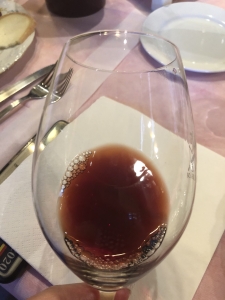The art of aging with grace
It is common to hear about wines with 10, 20, or even more years as high-quality and expensive wines, concepts that are not necessarily true. In reality, not all wine consumers appreciate old wines due to the profile and characteristics that they can develop while aging.
Quality is essential
For a wine to become “old” in good condition, it is important that it is of excellent quality when it is “young” and that its storage in the bottle has been taken care of. The word “storage” can be misleading if understood in its strictest sense. Storing wine does not mean freezing the characteristics of the just-bottled wine but rather providing conditions for the wine to evolve and express characteristics that it wouldn’t have otherwise.
Temperature, bottle position, light exposure, and stability of the support are important aspects in the “conservation” of wine. In addition to these, the quality of the cork/capsule and the opacity of the bottle influence the likelihood of successful aging. It is easy to understand the importance of these two aspects since light and oxygen are the greatest dangers to the stability of wine. Of course, good hygiene in the vineyard, cellar, and storage also contributes to the integrity of aging, preventing contamination in the liquid (pathogens, odors, etc.).
Bad signs, or?
Deterioration of the cork or a decrease in the volume of liquid in the bottle are signs that a wine may have been compromised. However, other aspects usually considered defects may not actually be so. Sediment, altered colour, cloudiness, and suspended particles can easily be mitigated using a decanter, filter paper, or strainer.
What to look for
In a tasting, one of the aspects evaluated is the wine’s aging potential. For this evaluation, in addition to the aromas and structure of the wine, acidity, body, heat (alcohol), and minerality are taken into account. Of course, if the grape variety (or blend) as well as the region of origin are known, it is possible to predict the success of aging. There are grape varieties that are well known for aging well in the bottle (international varieties: Cabernet Sauvignon and Tempranillo; Portuguese national varieties: Baga and Touriga Nacional, just to give a few examples). Geographically, Portugal has several regions with an excellent track record in terms of aging wines in bottles. Good examples of this are the Douro region, Bairrada, and Colares (Tejo and Lisbon region). So, my challenge for you is to go out there and try to find gems from those places.
Happy Wines everyone.
João Correia
This article was issued first in the newspaper “Portugal Post” number 346, from April 2023.


 D-30916
D-30916
